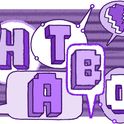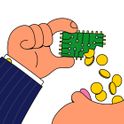iPad: iconic trailblazer for a whole new culture
Led by British-born Jonathan Ive, Apple’s design team has created another iconically elegant piece of hardware: the iPad. Lying somewhere between the portability of a mobile phone and the functionality of a laptop, it is a “tablet” computer—and the trailblazer for a whole new culture of media consumption. During its first 28 days on sale in the US in April it shifted over 1m units. Available in Britain from 28th May, it will fly off our shelves too, its starting price of £429 notwithstanding.
Portable, powerful, sensuously satisfying, the iPad takes the appeal of Apple’s touchscreen iPhone to the next level. Yet the iPad is also as much the consequence as the cause of an associated transformation whose effects are far larger than any one company or device: the triumph of the app.
An app is really just a cute term for an application—identical in essence to those that run on your computer. Thanks to Apple, however, an app’s delivery, use and style have very different connotations to the old-fashioned world of applications. Instead of bloating users’ experience with a myriad of features, as old-fashioned applications like Microsoft’s Office have tended to, apps tend to do one thing simply, instantly, and in the palm of your hand. Simply touch the icon and you’re off.
Today, there are more than 185,000 Apple apps available and more than 4bn have been sold. There are word processing packages, GPS navigation systems, calorie counters, lightsaber emulators, birdwatching guides, electronic books, and many more. Yet, staggeringly, apps are less than two years old—having been born in July 2008 when Apple opened its eponymous “App Store.” Based on the iTunes model that transformed the music industry, the store is a digital service that allowed consumers to download apps for, initially, their iPhones and iPod touches, for sums starting at nothing and averaging under $5.
In April 2009, to mark the billionth app download, Apple released a list of the 20 most popular free and paid-for apps. Fun was high on both lists: games claimed ten of the top 20 paid spots and seven of the free ones. “Entertainment” accounted for nine out of the other ten paid and five more free spots, ranging from a $1 motion-sensitive program allowing users to simulate drinking beer on-screen to the $1 “iFart Mobile,” the “world’s most popular digital fart machine.”
While these may seem ludicrous, part of the key to apps’ success is the playful immediacy of the relationship between those creating and purchasing them. For a developer, the cost of getting an app to market can be a few thousand dollars or less, while development times can be just weeks or even days. Simply sign up and pay $99 to become an official app developer, abide by Apple’s stringent terms, and (subject to official approval) you can start selling your brainchild at a price of your choosing.
The other side of the deal is equally important. In addition to its strict regulation of content, Apple takes 30 per cent of every sale: the price of access to its exclusive marketplace. And while there are tales of lone developers pocketing huge amounts of money thanks to one brilliant idea—such as the enterprising London coder who rode Tube trains for a month to create a mobile guide to where to get off nearest the exit at every station—most apps make little or no money. Instead, free apps offer an important new platform for established companies—Amazon, Google Facebook and so on—while small-timers’ hopes spring eternal.
For many consumers, the holy trinity of security, convenience and elegance make it worth paying the price of entry to Apple’s walled garden. Traditional software applications and operating systems have for years been seen as costly and awkward, while the simplicity of many online services—epitomised by the clutter-free haven of Google’s homepage—can still be both labour-intensive and bewildering in the range of options on offer. Apple steered a middle course between these two realms—and created a marketplace that allows others to come along for the ride.
It is not the only one, of course. Most successful among rivals is Google’s mobile phone operating system, Android—which, typically, is free to use and develop for. Android has about 50,000 apps on its marketplace; sales are worth much less than the App Store’s monthly revenues of $200m-plus, but it may yet come to dominate the future market.
This is certainly the hope of those who deplore Apple’s strategy—the company rigidly controls what apps run on the iPhone, while Google place no such restrictions on Android. These critics argue that Apple is throttling digital liberties and infantilising consumers. But the champions of freedom have quite a battle on their hands. It may be against the established ethos of the internet, but the almost 90m people using Apple’s iPhone operating system have repeatedly been willing to pay the price for the experiences on offer. It’s not just iFarts—tools for all tasks and tastes are snapped up by consumers for whom convenience and a certain elegant intimacy are a compelling alternative to search-and-hope.
“Personal computing” is a phrase that has been with us for decades; but perhaps Apple’s greatest triumph is to have created devices that make these words feel more real than ever. It’s a strategy that leaves even Google looking a little sluggish; and it has got the traditional paid-for media industries, from publishing to music and television, licking their lips. The walled garden may prove a fool’s paradise, as it has done before. But Apple’s vision of the app is here to stay, and with it the resurgence of a battle over the principles of access and ownership that many had thought ended. If you control something people value sufficiently, it seems they are still willing to pay you for the privilege of less freedom.
Led by British-born Jonathan Ive, Apple’s design team has created another iconically elegant piece of hardware: the iPad. Lying somewhere between the portability of a mobile phone and the functionality of a laptop, it is a “tablet” computer—and the trailblazer for a whole new culture of media consumption. During its first 28 days on sale in the US in April it shifted over 1m units. Available in Britain from 28th May, it will fly off our shelves too, its starting price of £429 notwithstanding.
Portable, powerful, sensuously satisfying, the iPad takes the appeal of Apple’s touchscreen iPhone to the next level. Yet the iPad is also as much the consequence as the cause of an associated transformation whose effects are far larger than any one company or device: the triumph of the app.
An app is really just a cute term for an application—identical in essence to those that run on your computer. Thanks to Apple, however, an app’s delivery, use and style have very different connotations to the old-fashioned world of applications. Instead of bloating users’ experience with a myriad of features, as old-fashioned applications like Microsoft’s Office have tended to, apps tend to do one thing simply, instantly, and in the palm of your hand. Simply touch the icon and you’re off.
Today, there are more than 185,000 Apple apps available and more than 4bn have been sold. There are word processing packages, GPS navigation systems, calorie counters, lightsaber emulators, birdwatching guides, electronic books, and many more. Yet, staggeringly, apps are less than two years old—having been born in July 2008 when Apple opened its eponymous “App Store.” Based on the iTunes model that transformed the music industry, the store is a digital service that allowed consumers to download apps for, initially, their iPhones and iPod touches, for sums starting at nothing and averaging under $5.
In April 2009, to mark the billionth app download, Apple released a list of the 20 most popular free and paid-for apps. Fun was high on both lists: games claimed ten of the top 20 paid spots and seven of the free ones. “Entertainment” accounted for nine out of the other ten paid and five more free spots, ranging from a $1 motion-sensitive program allowing users to simulate drinking beer on-screen to the $1 “iFart Mobile,” the “world’s most popular digital fart machine.”
While these may seem ludicrous, part of the key to apps’ success is the playful immediacy of the relationship between those creating and purchasing them. For a developer, the cost of getting an app to market can be a few thousand dollars or less, while development times can be just weeks or even days. Simply sign up and pay $99 to become an official app developer, abide by Apple’s stringent terms, and (subject to official approval) you can start selling your brainchild at a price of your choosing.
The other side of the deal is equally important. In addition to its strict regulation of content, Apple takes 30 per cent of every sale: the price of access to its exclusive marketplace. And while there are tales of lone developers pocketing huge amounts of money thanks to one brilliant idea—such as the enterprising London coder who rode Tube trains for a month to create a mobile guide to where to get off nearest the exit at every station—most apps make little or no money. Instead, free apps offer an important new platform for established companies—Amazon, Google Facebook and so on—while small-timers’ hopes spring eternal.
For many consumers, the holy trinity of security, convenience and elegance make it worth paying the price of entry to Apple’s walled garden. Traditional software applications and operating systems have for years been seen as costly and awkward, while the simplicity of many online services—epitomised by the clutter-free haven of Google’s homepage—can still be both labour-intensive and bewildering in the range of options on offer. Apple steered a middle course between these two realms—and created a marketplace that allows others to come along for the ride.
It is not the only one, of course. Most successful among rivals is Google’s mobile phone operating system, Android—which, typically, is free to use and develop for. Android has about 50,000 apps on its marketplace; sales are worth much less than the App Store’s monthly revenues of $200m-plus, but it may yet come to dominate the future market.
This is certainly the hope of those who deplore Apple’s strategy—the company rigidly controls what apps run on the iPhone, while Google place no such restrictions on Android. These critics argue that Apple is throttling digital liberties and infantilising consumers. But the champions of freedom have quite a battle on their hands. It may be against the established ethos of the internet, but the almost 90m people using Apple’s iPhone operating system have repeatedly been willing to pay the price for the experiences on offer. It’s not just iFarts—tools for all tasks and tastes are snapped up by consumers for whom convenience and a certain elegant intimacy are a compelling alternative to search-and-hope.
“Personal computing” is a phrase that has been with us for decades; but perhaps Apple’s greatest triumph is to have created devices that make these words feel more real than ever. It’s a strategy that leaves even Google looking a little sluggish; and it has got the traditional paid-for media industries, from publishing to music and television, licking their lips. The walled garden may prove a fool’s paradise, as it has done before. But Apple’s vision of the app is here to stay, and with it the resurgence of a battle over the principles of access and ownership that many had thought ended. If you control something people value sufficiently, it seems they are still willing to pay you for the privilege of less freedom.













